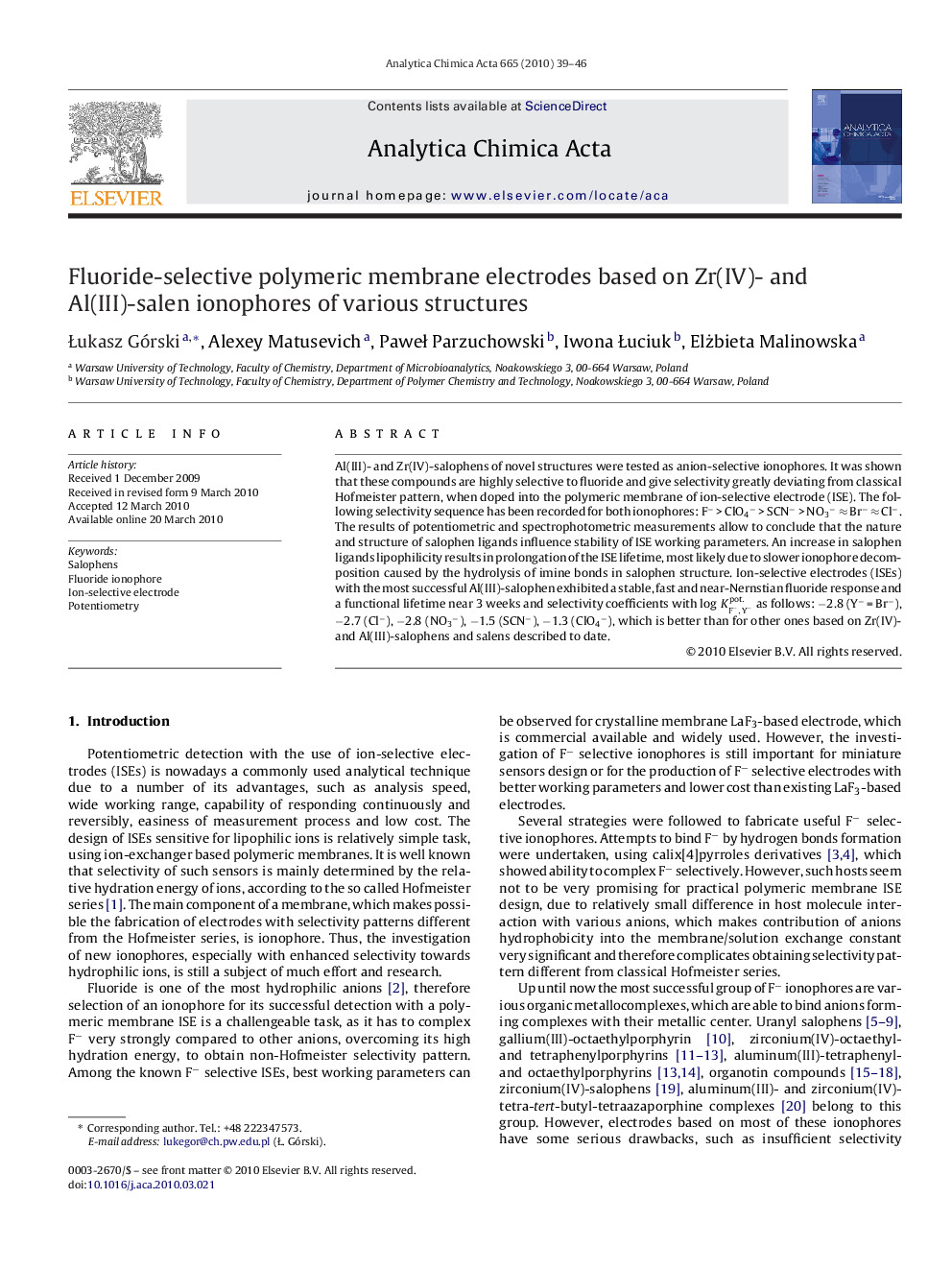| Article ID | Journal | Published Year | Pages | File Type |
|---|---|---|---|---|
| 1167675 | Analytica Chimica Acta | 2010 | 8 Pages |
Al(III)- and Zr(IV)-salophens of novel structures were tested as anion-selective ionophores. It was shown that these compounds are highly selective to fluoride and give selectivity greatly deviating from classical Hofmeister pattern, when doped into the polymeric membrane of ion-selective electrode (ISE). The following selectivity sequence has been recorded for both ionophores: F− > ClO4− > SCN− > NO3− ≈ Br− ≈ Cl−. The results of potentiometric and spectrophotometric measurements allow to conclude that the nature and structure of salophen ligands influence stability of ISE working parameters. An increase in salophen ligands lipophilicity results in prolongation of the ISE lifetime, most likely due to slower ionophore decomposition caused by the hydrolysis of imine bonds in salophen structure. Ion-selective electrodes (ISEs) with the most successful Al(III)-salophen exhibited a stable, fast and near-Nernstian fluoride response and a functional lifetime near 3 weeks and selectivity coefficients with log KF−,Y−pot. as follows: −2.8 (Y− = Br−), −2.7 (Cl−), −2.8 (NO3−), −1.5 (SCN−), −1.3 (ClO4−), which is better than for other ones based on Zr(IV)- and Al(III)-salophens and salens described to date.
